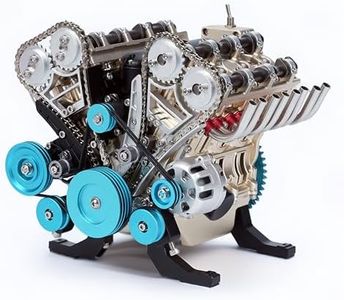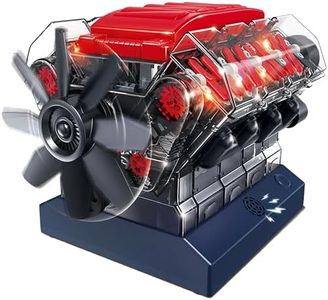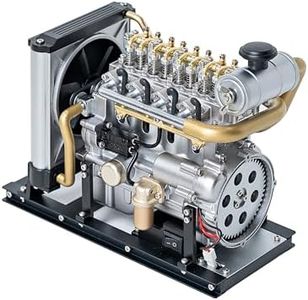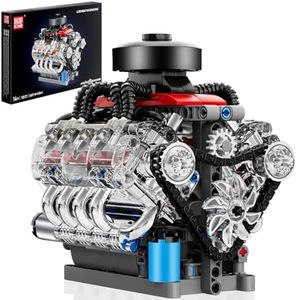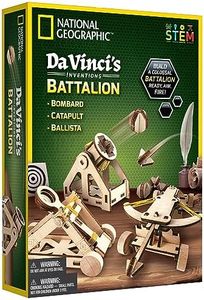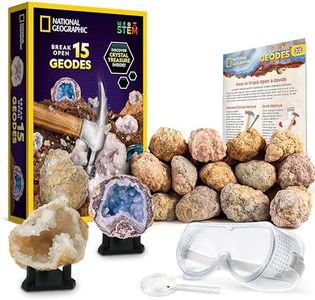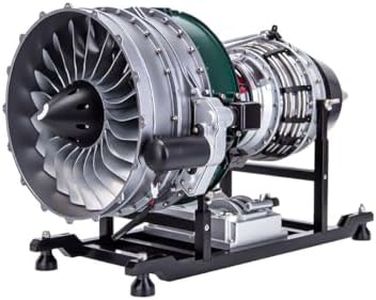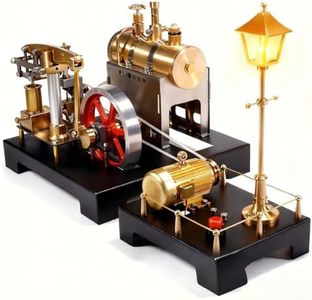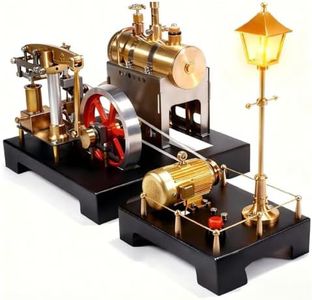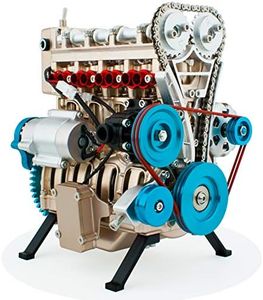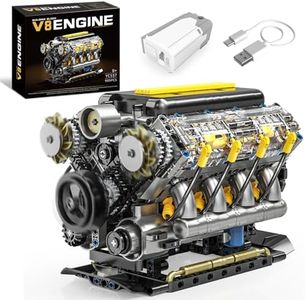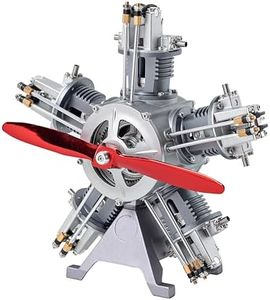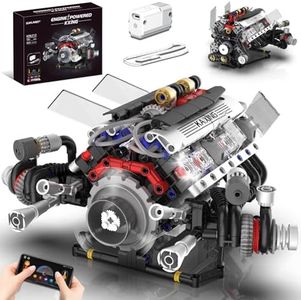10 Best engine model kits 2025 in the United States
Our technology thoroughly searches through the online shopping world, reviewing hundreds of sites. We then process and analyze this information, updating in real-time to bring you the latest top-rated products. This way, you always get the best and most current options available.

Our Top Picks
Winner
TECHING v8 Engine Model kit That Works Metal Mechanical Metal Assembly DIY Car Engine Model Kit 500+Pcs Educational Experiment (8 Cylinder Engine)
Most important from
45 reviews
The TECHING V8 Engine Model Kit is a fascinating option for those interested in engineering and mechanics, especially for beginners aged 14 and up. One of its standout features is the level of detail, using precision-cast and machined parts made from anodized aluminum and stainless steel. This gives the model a realistic touch, making it a great educational tool for understanding modern automobile engines.
With over 500 parts included, the kit offers a comprehensive assembly experience. The pieces are well-organized in custom foam carriers, making it easier to find what you need during the build process. The step-by-step instruction manual is clear and thoughtfully designed, which is crucial given the complexity of the engine model. Users will appreciate the simulation aspect as well, with an electric motor driving the engine to demonstrate the 4-stroke process, which adds to the enjoyment and educational value of the kit.
This engine model kit is an excellent choice for older teens and adults who enjoy hands-on projects and want to deepen their understanding of how engines work. Its strengths lie in its detailed construction and educational benefits, while the complexity and age restrictions may deter some potential builders.
Most important from
45 reviews
WINGIFT V8 Engine Building Set,V8 Engine Model kit That Run,Build Your Own STEM Mini V8 Model Engine Kit with Battery and Motor,8-Cylinder Car Engine Building Engineering Toys for Kids Adults(478PCS)
Most important from
44 reviews
The WINGIFT V8 Engine Building Set is a detailed scale model of a classic 8-cylinder engine, designed to mimic the real mechanical workings of a car engine, including pistons, valves, and a turbocharger. It is powered by a battery-operated motor, making it an engaging STEM toy suitable for teens and adults interested in mechanical models or engineering concepts. A standout feature is the transparent cylinder cover, which allows you to observe the pistons and other moving parts, enhancing its educational value by clearly demonstrating how an internal combustion engine operates.
Constructed from durable, eco-friendly ABS plastic, the model is safe and built to last, having undergone thorough safety testing. With 478 pieces, it provides a moderate challenge that encourages creativity and problem-solving during assembly. The kit includes a motor and battery box (batteries are not included), and the assembly process may require patience and some mechanical aptitude, making it better suited for older children (14+) and adults rather than beginners or very young kids.
Although the model is compact, it effectively captures key engine details, offering a rewarding project for hobbyists and STEM learners alike. Some users may find the instructions somewhat challenging or wish batteries were included, but customer reviews consistently praise its quality and educational value. This kit makes a fun and thoughtful gift for anyone curious about engines, mechanical design, or building models that actually move.
Most important from
44 reviews
Playz V8 Combustion Engine Model Kit That Runs - Build Your Own STEM Mini V8 Model Engine Kit for Adults & Kids Age 12+, Visible V8 Mini Engine Kit That Works for Adult w/ 270 STEM Parts
Most important from
4731 reviews
The Playz V8 Combustion Engine Model Kit is designed for both adults and kids aged 12 and up, making it an engaging and educational STEM project. This kit features a mini version of a classic 8-cylinder internal combustion engine, providing a realistic and interactive building experience. With 270 parts, it offers a moderate level of complexity that can help improve critical thinking and motor skills.
The engine comes to life with moving pistons, turning motor fans, and authentic engine sounds, adding to the realism and fun. However, the kit requires 3 AA batteries, which are not included, so you’ll need to have those on hand to get it running. The materials used in the kit are durable and designed to last through the assembly process and subsequent use.
This model is very popular as a gift, making it ideal for birthdays, holidays, or special occasions where STEM education is a focus. While the complexity may be challenging for younger users, it provides a satisfying and educational experience for older kids and adults. Some users might find the assembly instructions a bit challenging to follow, but the end result is a rewarding miniature engine that works.


